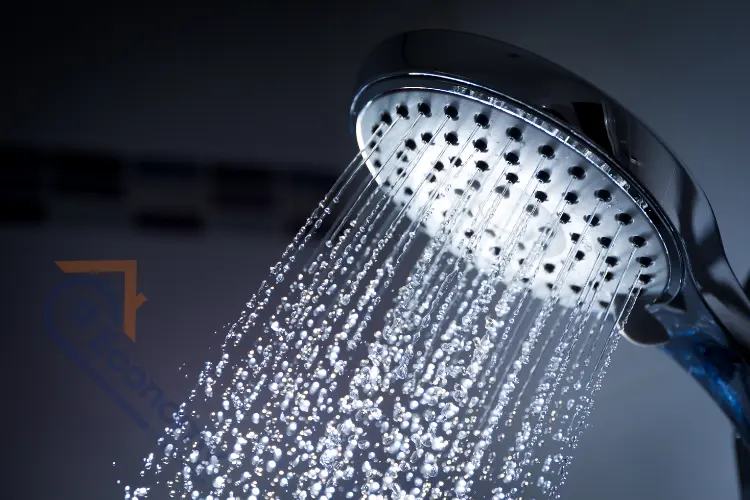Your bathroom exhaust fan works hard every day to keep moisture and odors at bay, but when was the last time you gave it some attention? A dirty exhaust fan doesn’t just look unsightly – it can actually make your bathroom smell worse and work less efficiently. The good news is that learning how to clean bathroom exhaust fan components is easier than you might think, and you don’t need to be a handyman to get the job done.
When your exhaust fan accumulates dust, dirt, and grime, it struggles to do its job properly. This means humidity lingers longer, odors stick around, and you might even notice that annoying rattling sound that signals it’s time for a deep clean. Whether you’re dealing with a simple fan or wondering how to clean bathroom exhaust fan with light, this comprehensive guide will walk you through everything you need to know to restore your fan to peak performance.
Why Your Bathroom Exhaust Fan Needs Regular Cleaning
Your bathroom exhaust fan is like the lungs of your bathroom – it breathes in the humid, smelly air and pushes it outside. Over time, this constant airflow carries dust, hair, soap residue, and other particles that stick to the fan blades and housing. When these particles build up, they create several problems that go beyond just looking messy.
First, a dirty fan loses its efficiency dramatically. The accumulated debris blocks airflow, making your fan work harder while moving less air. This means your bathroom stays humid longer after showers, creating the perfect environment for mold and mildew growth. You’ll notice that mirrors stay fogged up longer, and that musty smell might start to linger even after cleaning.
Second, dirty fans are noisy fans. When dust and grime coat the motor and blades, they become unbalanced and create vibrations that result in rattling, humming, or grinding sounds. These sounds aren’t just annoying – they’re often a sign that your fan is working overtime and might burn out sooner than expected.
Finally, a neglected exhaust fan can actually contribute to poor indoor air quality. Instead of removing odors and moisture, a clogged fan might just be stirring them around without actually venting them outside. This can lead to persistent bathroom odors that cleaning products can’t seem to eliminate.
Essential Tools and Supplies You’ll Need
Before diving into the cleaning process, gathering the right tools makes the job much easier and more effective. The good news is that most of these items are probably already in your cleaning closet or can be found at any hardware store.
Basic Cleaning Supplies:
- Vacuum cleaner with brush attachment
- Microfiber cloths or lint-free rags
- Warm soapy water (dish soap works great)
- All-purpose cleaner or degreaser
- Small brush or old toothbrush
- Compressed air canister (optional but helpful)
Safety Equipment:
- Step ladder or sturdy chair
- Rubber gloves
- Dust mask or respirator
- Safety glasses (recommended when using compressed air)
Tools for Deeper Cleaning:
- Screwdriver (usually Phillips head)
- Plastic drop cloths or old towels
- Small container for screws
- Flashlight or headlamp for better visibility
Having everything ready before you start prevents frustrating interruptions and makes the whole process flow smoothly. Remember that safety comes first – always turn off the power to your exhaust fan before beginning any cleaning work, and make sure your ladder is stable and positioned safely.
Safety First: Preparing Your Workspace
Safety should always be your top priority when working on any electrical fixture, and bathroom exhaust fans are no exception. Before you even touch the fan, take a moment to properly prepare your workspace and ensure you’re protected throughout the cleaning process.
The most important step is turning off the power to your exhaust fan. Don’t just flip the wall switch – go to your electrical panel and turn off the circuit breaker that controls the bathroom fan. This extra precaution prevents accidental startup while you’re working and protects you from electrical shock. If you’re unsure which breaker controls your fan, it’s better to turn off the main bathroom circuit entirely.
Next, set up your workspace for success. Clear the area around your fan of any decorative items, toiletries, or anything that might get in your way. Lay down old towels or plastic sheeting to catch any debris that falls during cleaning. This preparation saves you cleanup time later and prevents dust from spreading throughout your bathroom.
Position your ladder or chair carefully, ensuring it’s stable and gives you comfortable access to the fan. Never overreach or lean too far – it’s better to move your ladder than risk a fall. If you’re working on a fan with integrated lighting, be extra cautious about the light bulbs and fixtures, as they can be fragile and may be warm if recently used.
How to Clean Bathroom Exhaust Fan: Step-by-Step Guide
Now that you’ve prepared your workspace and gathered your supplies, it’s time to tackle the actual cleaning process. The key to success is working methodically and taking your time – rushing through this process often means having to do it again sooner than necessary.
Start by removing the fan cover, which is usually held in place by spring clips or screws. Gently pull the cover down and away from the ceiling, being careful not to force it. If it seems stuck, double-check for additional clips or screws you might have missed. Some covers simply slide out once the clips are released, while others need to be lifted slightly before sliding.
Once the cover is removed, you’ll likely be amazed (and possibly horrified) by the amount of dust and debris that’s accumulated inside. Use your vacuum cleaner with the brush attachment to carefully remove loose dust and debris from the fan blades, motor housing, and surrounding area. Work slowly and methodically, paying special attention to the areas where dust tends to accumulate most heavily.
After vacuuming, it’s time for the detailed cleaning. Use a microfiber cloth dampened with all-purpose cleaner to wipe down the fan blades, being careful not to bend or damage them. For stubborn grime, a small brush or old toothbrush can help remove buildup from hard-to-reach areas. Take your time with this step, as thorough cleaning now means better performance and longer intervals between cleanings.
How to Clean Bathroom Exhaust Fan Without Removing Components
Sometimes you need a quick refresh but don’t have time for a complete disassembly. Learning how to clean bathroom exhaust fan without removing the entire unit is perfect for regular maintenance between deep cleans, and it’s much faster than a full teardown.
The exterior cleaning approach focuses on what you can reach from below without removing the fan cover. Start by turning off the power and using a vacuum cleaner with a brush attachment to remove loose dust from the visible parts of the fan cover. Many covers have decorative grilles or slats that trap significant amounts of dust, and a good vacuuming can make a noticeable difference in both appearance and airflow.
For the fan blades themselves, you can often reach them through the cover openings using a long-handled brush or even a clean paintbrush. Gently brush the blades to dislodge dust and debris, working from the center outward. This technique won’t get every speck of dust, but it can significantly improve airflow and reduce noise without requiring any disassembly.
Compressed air is another excellent tool for cleaning without removal. Use short bursts to blow dust off the fan blades and motor housing, always wearing safety glasses and a dust mask. Be careful not to over-spin the fan with compressed air, as this can damage the motor bearings. This method is particularly effective for reaching areas that are difficult to access with brushes or cloths.
Cleaning the Fan Cover and Grille
The fan cover and grille are usually the dirtiest parts of your exhaust fan because they’re the first line of defense against dust and debris. These components typically accumulate a thick layer of dust, hair, and other particles that can significantly reduce airflow and make your fan less effective.
Once you’ve removed the cover, take it to a well-ventilated area for cleaning. Start by shaking it gently to remove loose debris, then use your vacuum cleaner to remove as much dust as possible. Pay special attention to the grille openings, as these are often packed with accumulated dust and hair that can block airflow dramatically.
For washing the cover, warm soapy water is usually sufficient for most cleaning jobs. Use a degreasing dish soap and let the cover soak for a few minutes if it’s particularly dirty. A soft brush or cloth can help remove stubborn grime, but avoid using abrasive materials that might scratch or damage the finish. Some covers are dishwasher safe, but check the manufacturer’s recommendations first.
After cleaning, rinse the cover thoroughly with clean water and dry it completely before reinstalling. Any remaining moisture can attract dust quickly and might cause electrical issues if it drips into the motor housing. Consider this cleaning time as an opportunity to inspect the cover for any cracks or damage that might need attention.
Deep Cleaning the Fan Motor and Blades
The heart of your exhaust fan system is the motor and fan blades, and these components require careful attention during cleaning. While you should never attempt to disassemble the motor itself, you can clean the accessible parts safely and effectively with the right approach.
Before working on the motor area, ensure the power is completely off and the fan blades have stopped moving entirely. Use your vacuum cleaner with a brush attachment to remove loose dust from the motor housing and surrounding area. Be gentle around the motor, as excessive force or moisture can damage sensitive electrical components.
The fan blades themselves can usually be cleaned in place using a damp cloth and mild cleaner. Work carefully around each blade, removing dust and grime that has accumulated on both sides. Some fan designs allow you to remove the blade assembly for more thorough cleaning, but this varies by manufacturer and model. If you’re unsure about removing components, stick to cleaning what you can reach safely.
For motors with visible bearings or moving parts, a small amount of appropriate lubricant might be beneficial, but only if recommended by the manufacturer. Over-lubrication can attract more dust and debris, so less is definitely more in this case. If your motor seems to be running rough or making unusual noises even after cleaning, it might be time to consult a professional or consider replacement.
How to Clean Bathroom Exhaust Fan with Light
Many modern bathroom exhaust fans include integrated lighting, which adds an extra layer of complexity to the cleaning process. Understanding how to clean bathroom exhaust fan with light safely requires attention to both the ventilation and lighting components.
Start by ensuring that both the fan and light circuits are turned off at the breaker panel. Even if they’re on separate switches, it’s safer to disable power to the entire fixture. Remove any light bulbs carefully, as they may be warm and fragile. LED bulbs are generally more durable than traditional incandescent bulbs, but they still require gentle handling.
The light housing and reflector areas tend to accumulate dust and may have dead insects or other debris. Use a vacuum cleaner with a brush attachment to remove loose material, then wipe down the reflector and housing with a damp cloth. Be careful not to get moisture into electrical connections or lamp sockets, as this can cause shorts or corrosion.
When cleaning around the light components, pay attention to the heat vents and air passages that keep the lighting system cool. These areas can become blocked with dust, which reduces the efficiency of both the lighting and ventilation systems. A small brush or compressed air can help clear these passages effectively.
Troubleshooting Common Issues
Even with regular cleaning, exhaust fans can develop problems that go beyond simple dust accumulation. Recognizing and addressing these issues early can save you money and prevent more serious problems down the road.
Persistent Odors: If your fan still seems to circulate odors even after cleaning, check the ductwork and exterior vent. Sometimes the problem isn’t with the fan itself but with blocked or damaged ventilation paths. A professional inspection might be necessary if the problem persists.
Unusual Noises: Grinding, rattling, or squealing sounds after cleaning usually indicate worn bearings or loose components. While cleaning can reduce some noise by removing debris, mechanical wear requires professional attention or replacement parts.
Reduced Airflow: If cleaning doesn’t restore proper airflow, check for damage to the fan blades or motor. Sometimes blades can become warped or loose, reducing their effectiveness even when clean.
Electrical Issues: If your fan doesn’t start after cleaning and reassembly, double-check all connections and ensure the power is restored. If problems persist, consult an electrician rather than attempting electrical repairs yourself.
Maintenance Schedule and Prevention Tips
Establishing a regular maintenance schedule prevents the heavy buildup that makes cleaning difficult and keeps your exhaust fan running efficiently year-round. The frequency of cleaning depends on usage, but most bathroom exhaust fans benefit from attention every three to six months.
Monthly Tasks:
- Quick visual inspection for obvious dust buildup
- Check that the fan runs smoothly and quietly
- Ensure the exterior vent is clear of obstructions
Quarterly Tasks:
- Light cleaning of the fan cover and grille
- Vacuum loose dust from accessible areas
- Check for any unusual noises or vibrations
Semi-Annual Tasks:
- Complete disassembly and thorough cleaning
- Inspect all components for wear or damage
- Clean or replace any filters if present
Prevention strategies can significantly reduce the frequency and difficulty of cleaning. Using the exhaust fan during and after showers removes humidity that would otherwise condense and attract dust. Keeping bathroom doors closed during operation improves efficiency and reduces the amount of dust drawn into the fan from other areas of the house.
| Maintenance Task | Frequency | Time Required | Difficulty Level |
|---|---|---|---|
| Visual Inspection | Monthly | 2-3 minutes | Easy |
| Light Cleaning | Quarterly | 15-20 minutes | Easy |
| Deep Cleaning | Semi-annually | 45-60 minutes | Moderate |
| Professional Service | Annually | 1-2 hours | Professional |
When to Call a Professional
While most exhaust fan cleaning can be handled by homeowners, certain situations require professional expertise. Recognizing when to call in the experts can save you time, money, and potential safety hazards.
Electrical Issues: If your fan doesn’t work after cleaning, or if you notice any signs of electrical problems like sparks, burning smells, or tripped breakers, stop immediately and call an electrician. These issues can be dangerous and require professional diagnosis and repair.
Ductwork Problems: If cleaning the fan doesn’t improve airflow, the problem might be in the ductwork leading to the exterior vent. This often requires professional equipment and expertise to diagnose and repair properly.
Motor Replacement: When fan motors fail, replacement usually involves electrical work and precise fitting of new components. While some experienced DIYers can handle this, most homeowners benefit from professional installation to ensure proper operation and safety.
Structural Issues: If you notice any damage to the ceiling around the fan, water stains, or signs of moisture problems, these issues go beyond simple cleaning and require professional assessment.
Energy Efficiency and Performance Benefits
A clean exhaust fan isn’t just about eliminating odors – it’s about creating a more efficient and comfortable bathroom environment. Understanding these benefits can motivate you to maintain your fan properly and recognize the value of regular cleaning.
Improved Air Quality: Clean fans remove moisture and odors more effectively, preventing the buildup of mold, mildew, and bacteria that can affect indoor air quality. This is particularly important for people with allergies or respiratory sensitivities.
Energy Savings: When your exhaust fan runs efficiently, it removes humidity faster, reducing the load on your home’s air conditioning system. This can lead to measurable energy savings, especially in humid climates or during summer months.
Extended Equipment Life: Regular cleaning reduces wear on the motor and moving parts, extending the life of your exhaust fan significantly. The cost of regular maintenance is minimal compared to premature replacement.
Noise Reduction: A clean, well-maintained fan operates more quietly, making your bathroom more pleasant to use and reducing noise that might disturb other household members.
Seasonal Considerations
Different seasons bring different challenges for bathroom exhaust fans, and adjusting your maintenance approach accordingly can improve performance and longevity.
Summer Months: High humidity during summer means your exhaust fan works harder and may accumulate moisture-related debris more quickly. Consider more frequent cleaning during peak humidity periods, and ensure the exterior vent is clear of vegetation that grows rapidly in summer.
Winter Challenges: Cold weather can cause condensation in ductwork, and some exterior vents may become blocked by snow or ice. Check the exterior vent regularly during winter months and ensure it’s clear of obstructions.
Spring Cleaning: Spring is an ideal time for thorough exhaust fan maintenance, as pollen and other airborne particles from open windows can accumulate in the fan. This is also a good time to inspect the exterior vent and surrounding area for any winter damage.
Fall Preparation: Before winter arrives, give your exhaust fan a thorough cleaning and inspection to ensure it’s ready for the challenges of the heating season. This is also a good time to check that the exterior vent flap moves freely and seals properly.
Key Takeaways
Maintaining your bathroom exhaust fan doesn’t have to be a daunting task. With the right approach and regular attention, you can keep your fan running efficiently and your bathroom smelling fresh. Remember that how to clean bathroom exhaust fan maintenance is an investment in your home’s comfort and air quality.
The most important points to remember are safety first, regular maintenance, and knowing when to call professionals. Simple monthly inspections and quarterly light cleaning can prevent major problems and extend the life of your exhaust fan significantly.
Whether you’re learning how to clean bathroom exhaust fan without removing components for quick maintenance or tackling a complete deep clean, the key is consistency and attention to detail. Your bathroom exhaust fan works hard for you – returning the favor with proper care ensures it continues to do its job effectively for years to come.
Frequently Asked Questions
Q: How often should I clean my bathroom exhaust fan?
A: Most bathroom exhaust fans should be cleaned every 3-6 months, depending on usage and environmental conditions. High-usage bathrooms or homes with pets might need more frequent cleaning.
Q: Can I use water to clean the fan motor?
A: Never use water directly on the motor or electrical components. Use only damp cloths and ensure all power is disconnected before cleaning any electrical parts.
Q: Why is my fan still noisy after cleaning?
A: Persistent noise after cleaning usually indicates worn bearings or loose components that require professional attention or replacement parts.
Q: Is it safe to clean the fan myself?
A: Yes, basic cleaning is safe for most homeowners when proper safety precautions are followed, including turning off power and using appropriate tools.
Q: How do I know if my fan needs professional service?
A: Call a professional if you notice electrical issues, persistent problems after cleaning, or if you’re uncomfortable working with electrical components.
Q: Can I prevent dust buildup in my exhaust fan? A: While you can’t eliminate dust entirely, using the fan regularly, keeping bathroom doors closed during operation, and maintaining proper ventilation can reduce accumulation.
Q: What’s the difference between cleaning a fan with and without lights?
A: Fans with integrated lighting require extra care around electrical components and bulbs, but the basic cleaning process remains the same with additional safety precautions.







